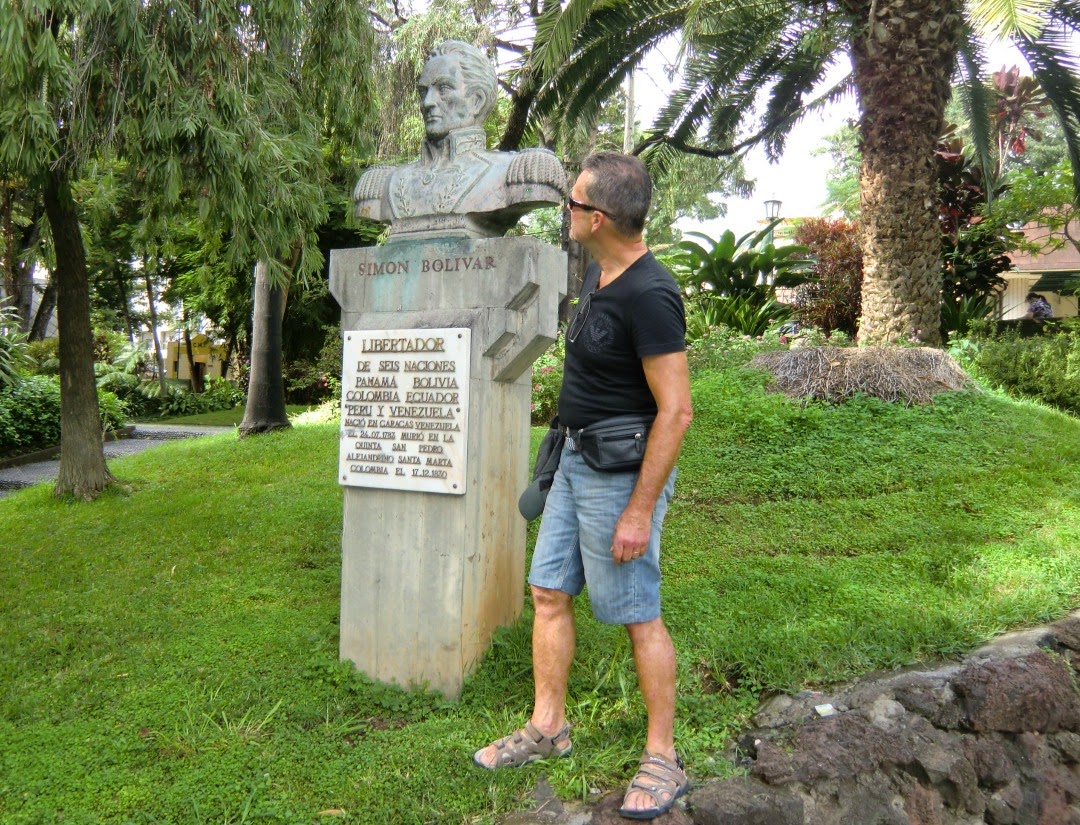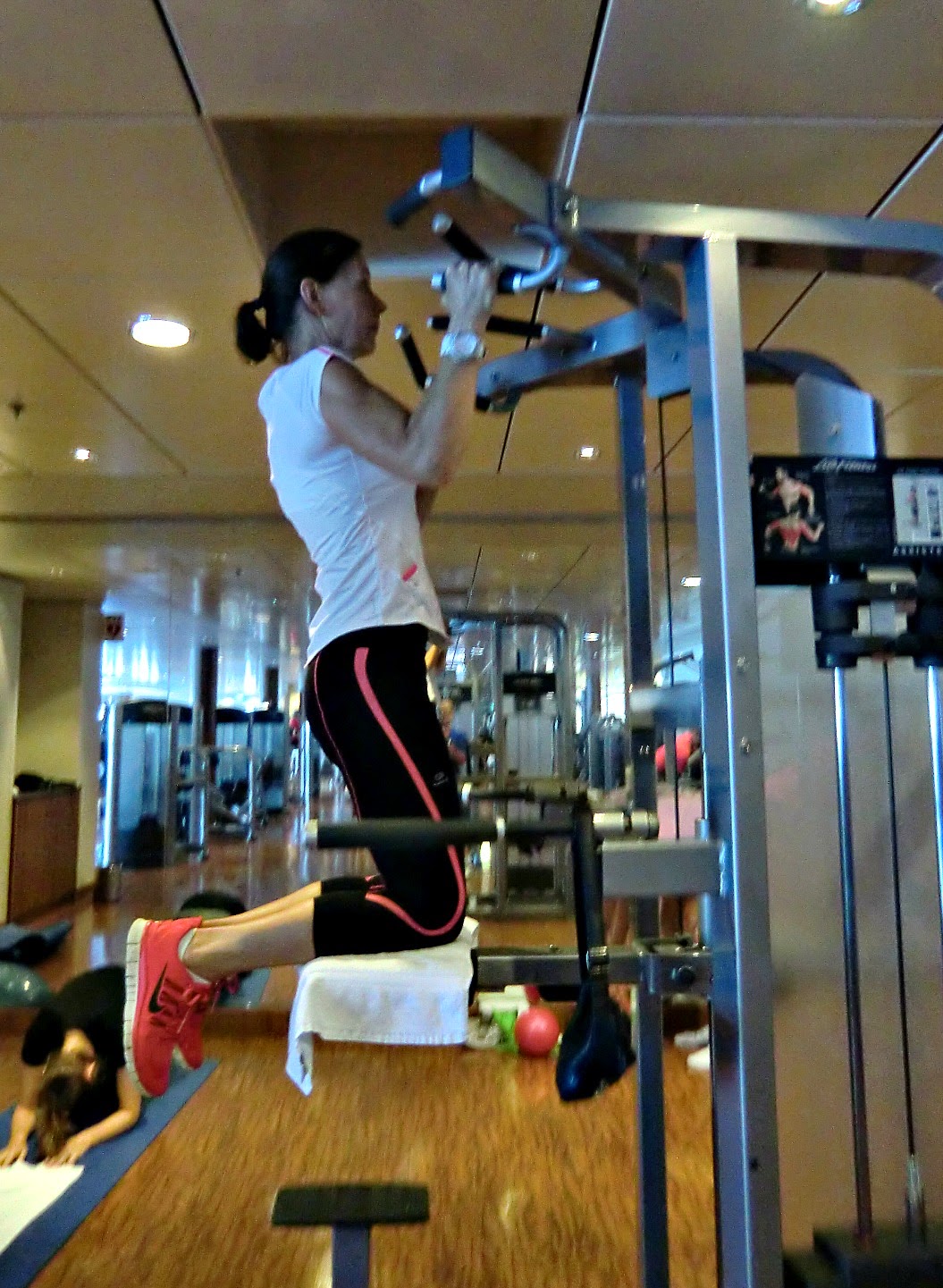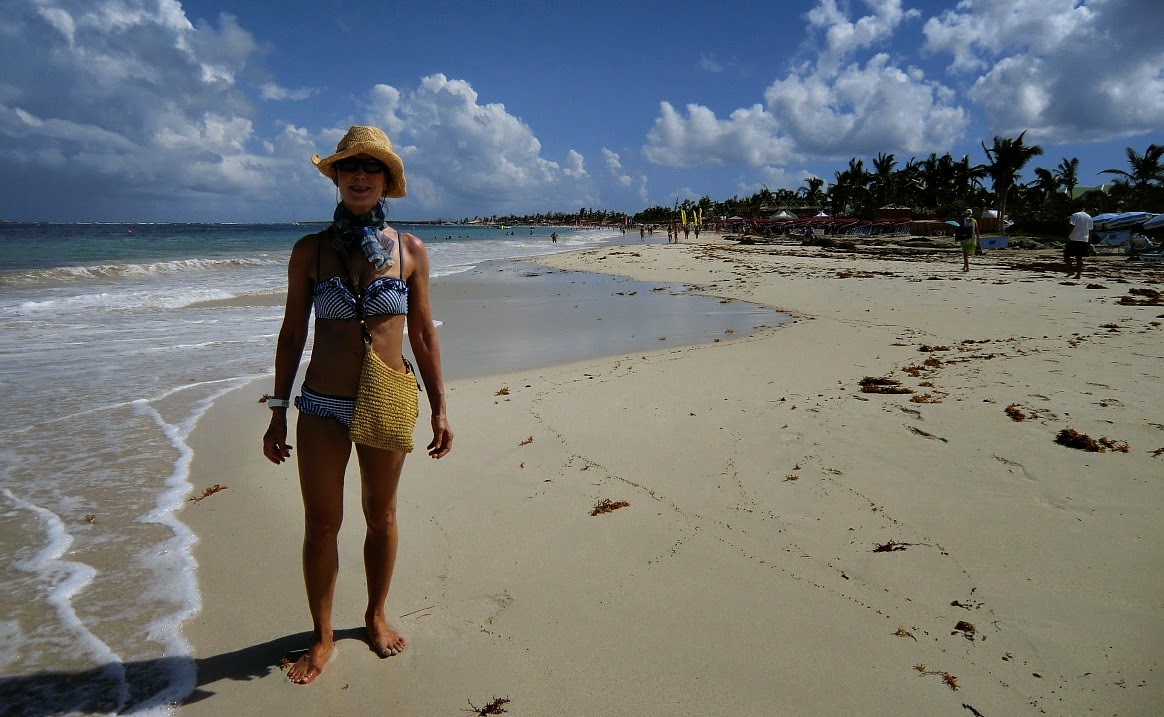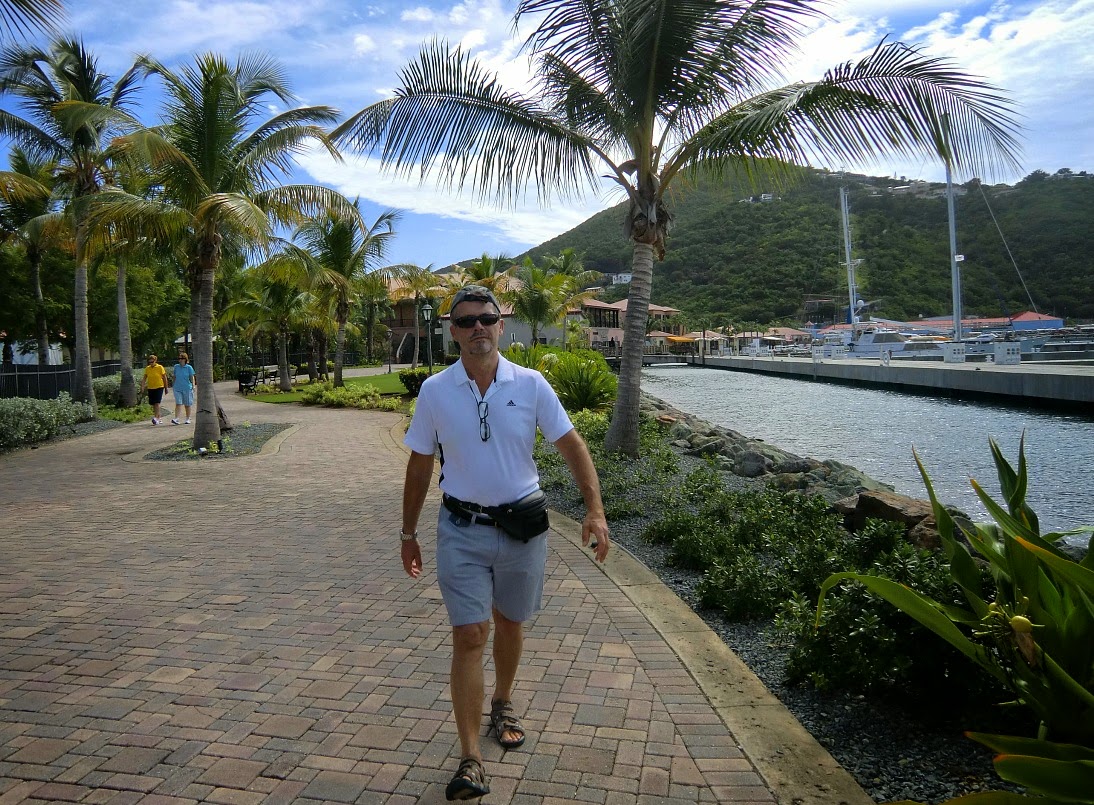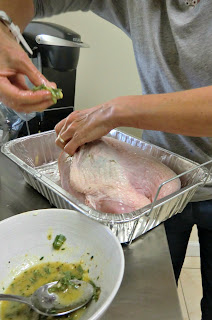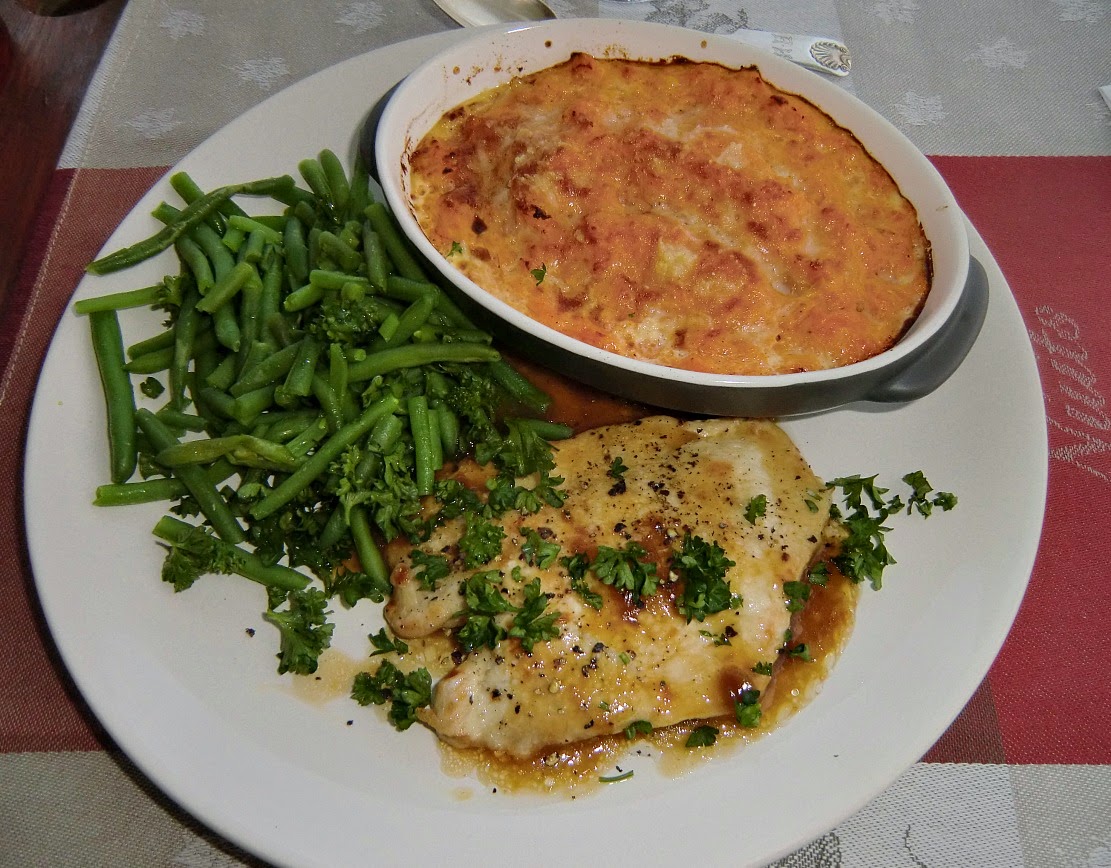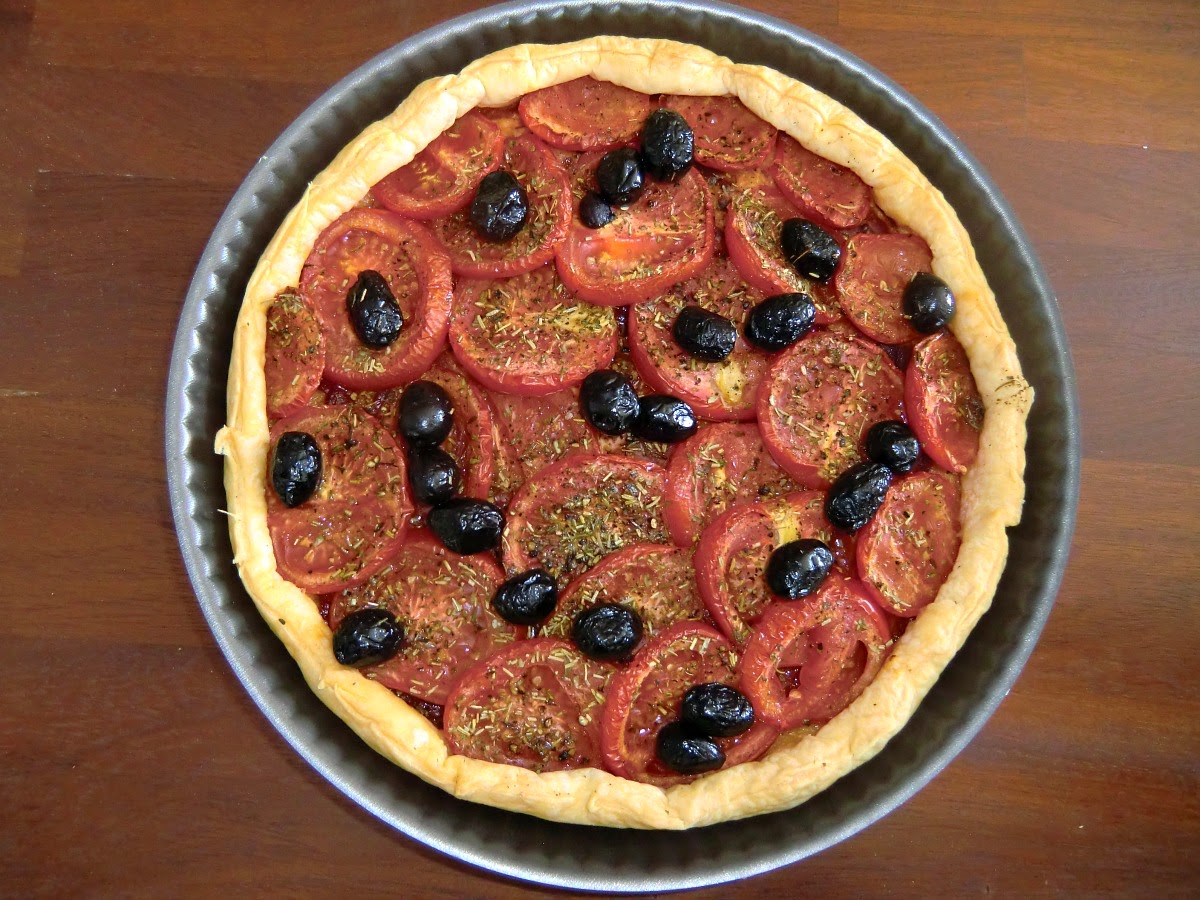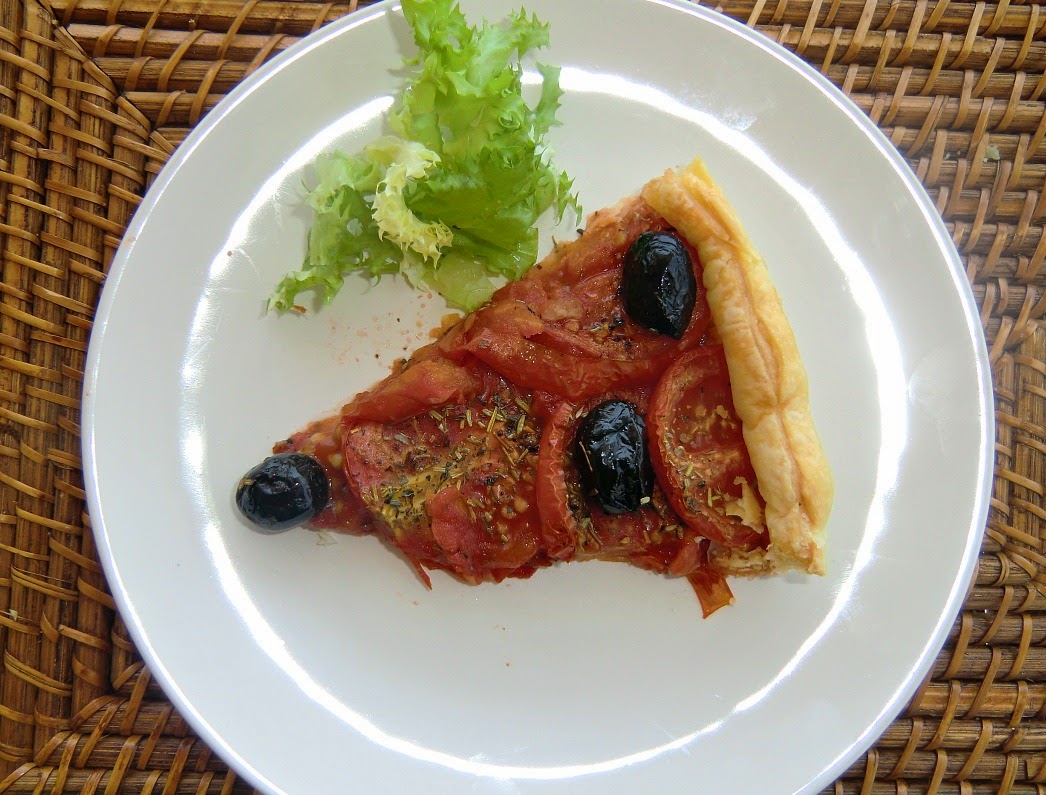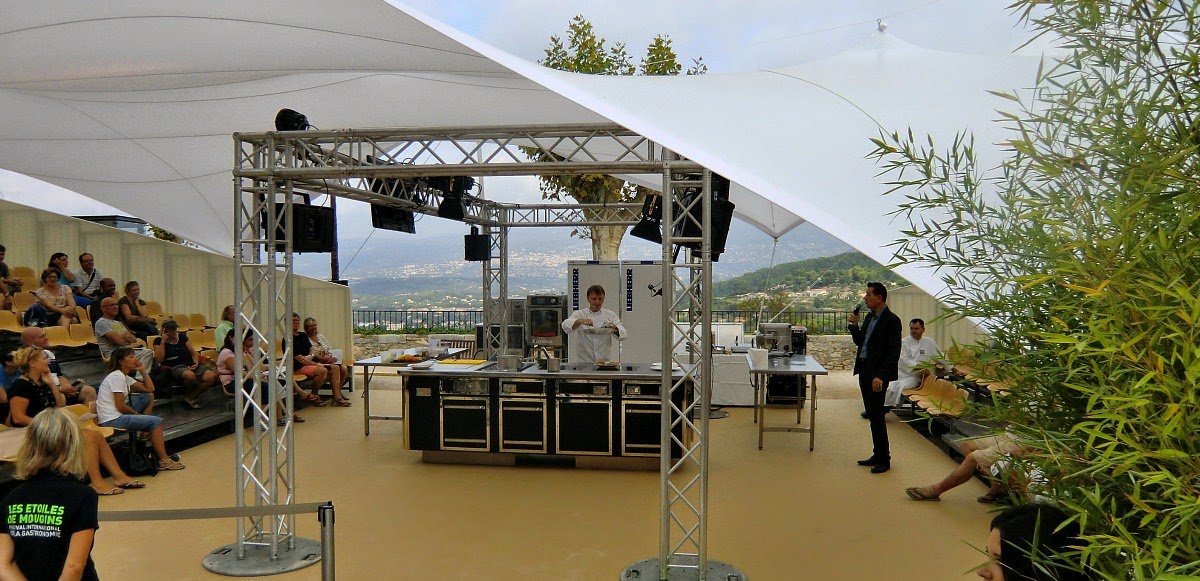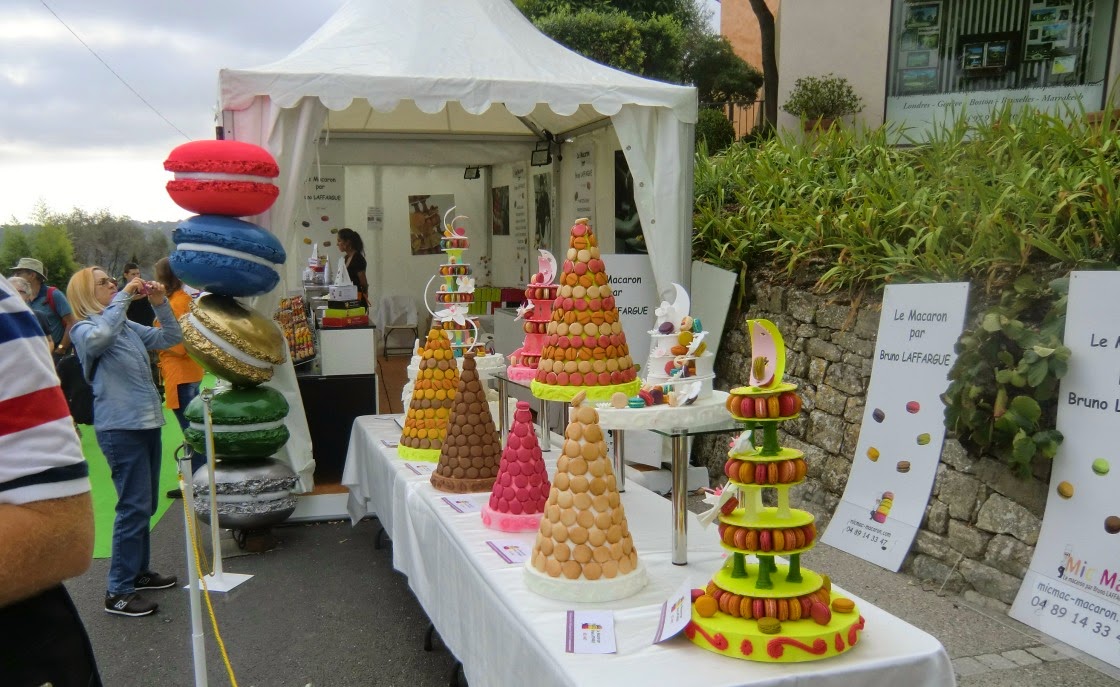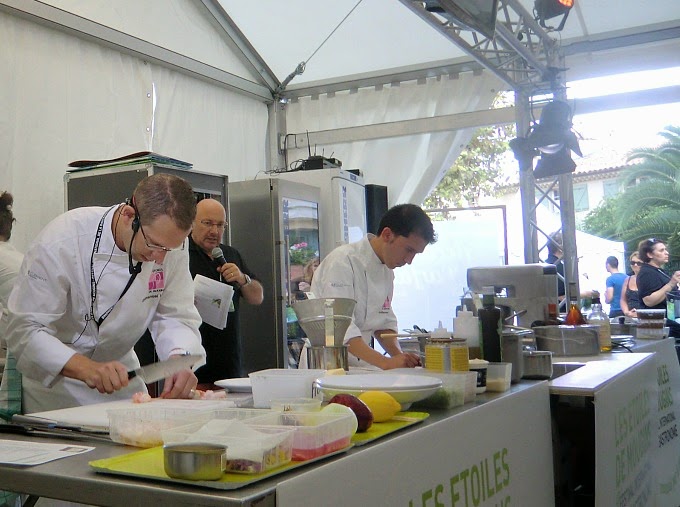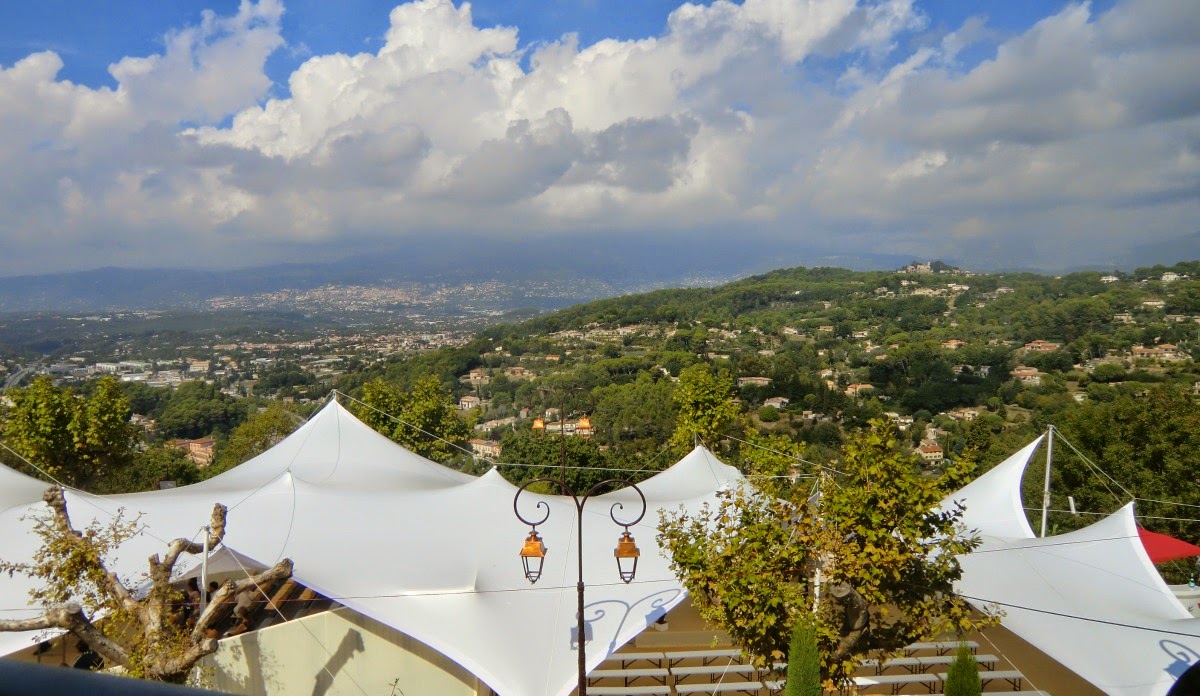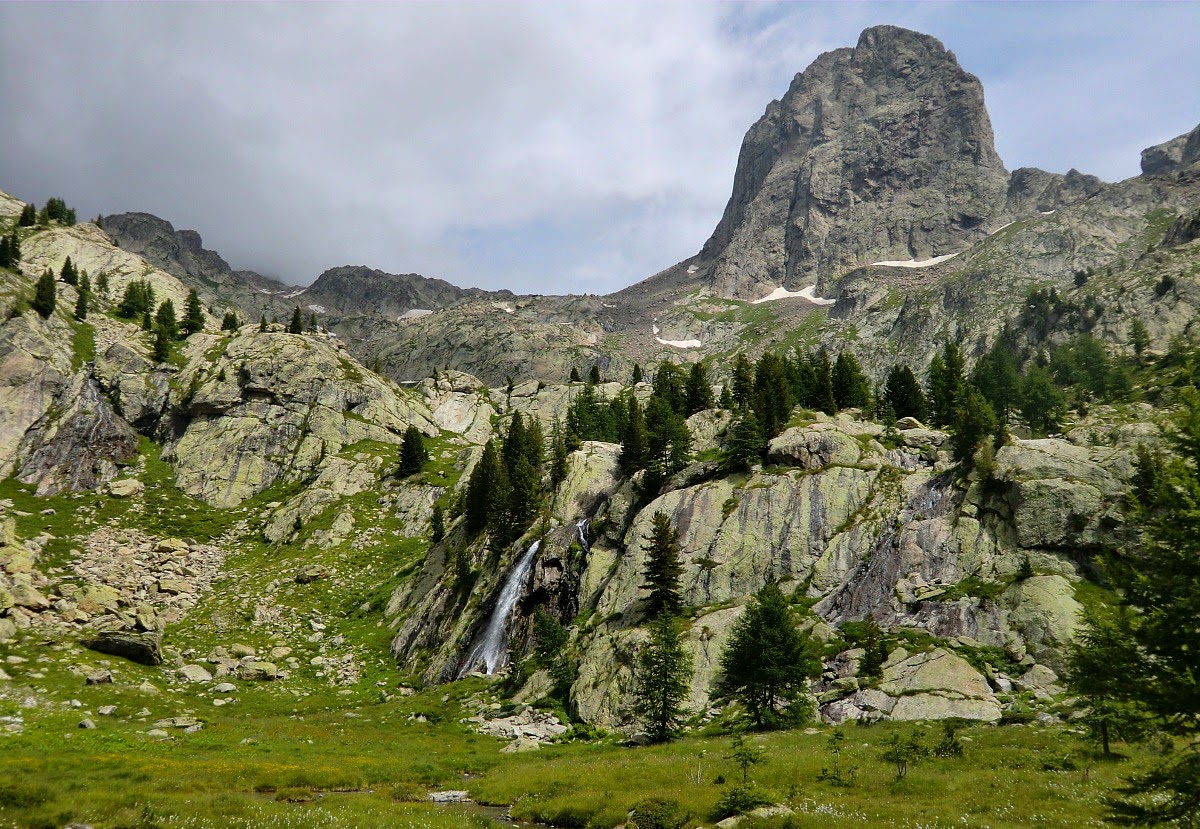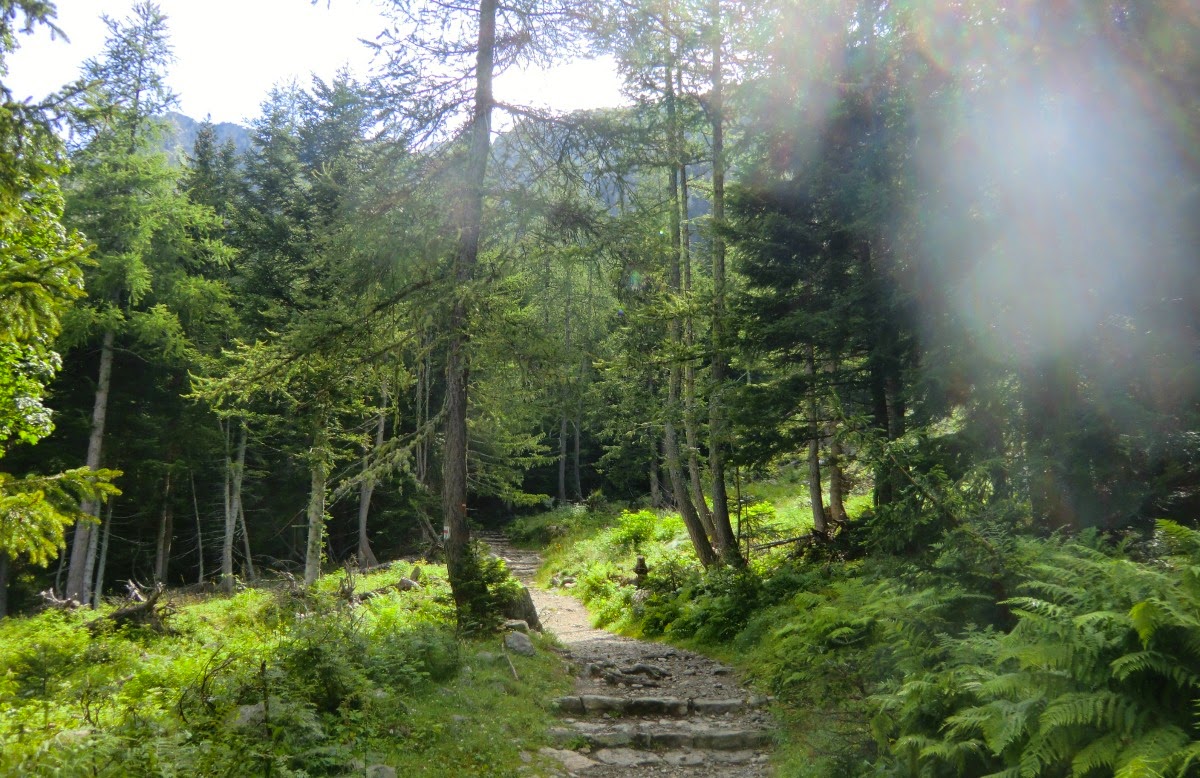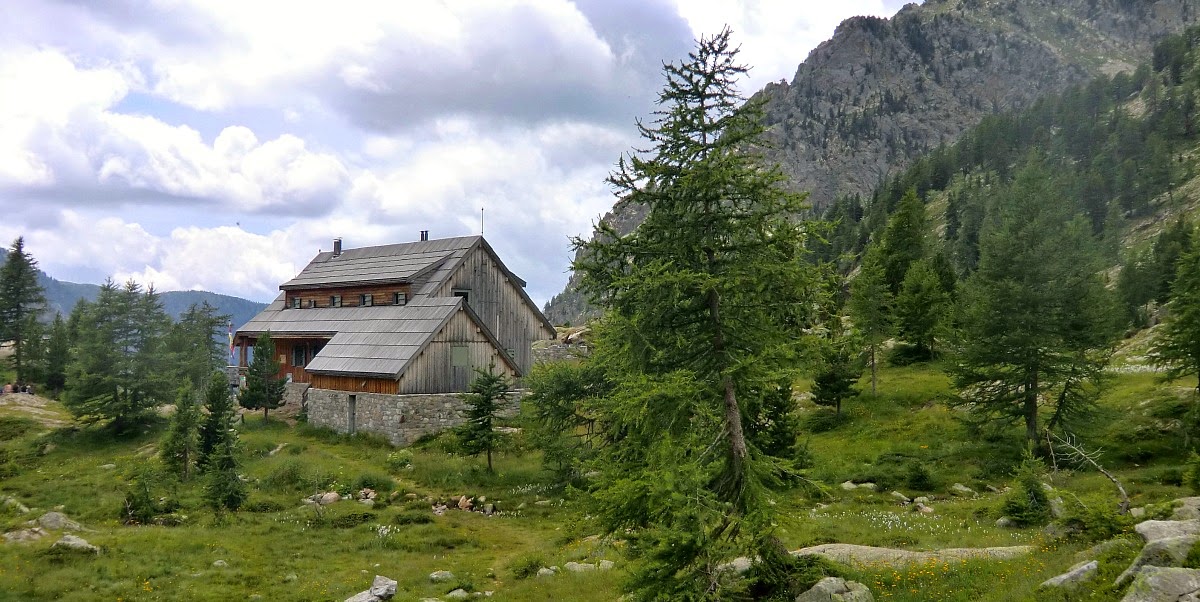
We recently made a transatlantic crossing on Norwegian Epic from Barcelona to Miami. It was a two-week cruise with port days in Madeira, St. Maarten and St. Thomas. This was our first transatlantic cruise, and we were looking forward to it as an adventure, but of course wanted to do some planning as well.
We Googled what was the biggest issue before a transatlantic cruise. It seemed that people were most concerned about weight gain and dress code.
As Norwegian’s dress code is casual as part of their Freestyle experience, we didn't have any concerns about dress code. For dining out we normally feel comfortable dressed smart casual. Because we are used to warm restaurants in the South of France, our only concern was the cool AC in American restaurants. So our smart casual evening wear needed also to be warm.
In order to maintain stable weight, our aim was to try and maintain approximately our normal activity level and not to increase our calorie intake. Because we are used to regular hikes which take several hours, the first aim was challenging on board a ship.
We set simple rules for activity:
1. Always climb stairs and never use elevators.
We one day estimated that by climbing stairs we made about 200 m vertical ascent! We were thankful to Epic’s long corridors which were excellent low-level activity.
2. We planned to use Epic’s gym every other day and the running track the other days.
The gym was fantastic and much more appealing than the running track on deck 7. So we went to the gym almost every day, except port days, alternating with weight training and aerobic training.
3. We aimed to grab every opportunity for dancing.
The 2-day salsa course was great, and we did some ex tempore salsa when possible. For Halloween, we even tried to learn Michael Jackson’s Thriller steps.
4. On port days we wanted to pack in activities and not just sit in a tour bus.
Funchal in Madeira was great to explore by walking. We took Norwegian’s shuttle bus to the centre so we could walk in more interesting areas than in the port. In St. Maarten we participated in Orient Beach Rendezvous Tour. It was a great day with swimming in sea and walking on a super sandy beach; we could have stayed longer! We had visited Charlotte Amalie previously over 30 years ago and were curious to see how much it had changed. We took the 1,5 mile seafront walk from the ship to the old centre where we explored the alleys and shops.
5. We planned to do every day at some point stretching.
To our usual stretching we added some quiet time and tried mindfulness meditation. This was new to us, and felt so relaxing that we planned to continue with it. They had yoga on Epic, but it was at 8 am, too early for us unfortunately.
But still with all this we couldn’t quite maintain our normal activity level so we had to be stricter with our eating. Having previously done a short weekend cruise with Norwegian we knew that it is easy to make healthy choices and at the same time enjoy the great cuisine. Even so, some simple rules would make things easier because on cruise ships one is tempted all the time. According to one survey the average weight gain is 14 lbs. / 6.4 kg for a two week cruise.
We agreed to the following rules:
1. We planned to eat three moderate size meals and a small snack in the afternoon.
There were no problems with this meal plan, our habitual, except that the small snack tended to increase from a small plain yoghurt to a slice of quiche.
2. We decided to continue with our healthy moderate breakfast.
We had no problems choosing a healthy breakfast similar to what we usually have at home. Except that again the fruit portions quickly seemed to get bigger and bigger! Epic had wonderful soft Swiss style muesli, frozen berries and plain yoghurt. Luckily they also had small bowls to help with the portion control. Some days we skipped the muesli and had a vegetable omelet or egg Benedict perfectly cooked by a chef. This made us feel like a million dollar star!
3. We aimed to have lunch with plenty of salads and vegetables, a dressing with olive oil and vinegar, some protein and a slice of multigrain bread.
No problems with this. The buffet lunch was varied and tasty. We only drank ice water, never soda or beer which quickly add empty calories. On port days we enjoyed a glass of wine with lunch.
4. Sorry, no cocktails!
They are loaded with empty calories. Some examples: Mojito 160 kcal, Bloody Mary 168, Gin and tonic 190, Margarita 192, Cosmopolitan 200 kcal. A glass of dry sparkling wine has only 89 kcal, so we enjoyed a pre-dinner glass of Prosecco on special days like leaving a port or whenever there was something to celebrate.
5. We planned to have Norwegian's three-course dinner as we knew that the portions are moderate.
The exceptions were pasta, steaks and cakes which came in large American portions. We normally almost never order pasta anywhere in restaurants because the portions now are huge also in Europe and they never have whole wheat pasta. The steaks were good but we couldn’t eat them all. We were careful with the breadbasket. I gradually started to hide the breadbasket after my husband had had his slice. We had a glass of wine and ice water. In short, we enjoyed fine American dining at its best, and often to live music! The menus were varied; from fish and seafood to meat and vegetarian dishes. For dessert, we tried to avoid cakes and often chose fruit-based desserts. Epic’s Warm Dark Chocolate Volcano was super, and soon became our favourite dessert after a lighter main course.
6. Epic had a nice selection of wines by glass.
We enjoyed a glass of different wine every evening and made some new discoveries. We never had soda or beer, only ice water. After dinner we only drank water and always kept a water bottle in our cabin.
How did it go? We measured our waist line at the start of the cruise, one week later and at the end of the cruise. We used this measurement as a proxy to weight maintenance because most of the rapid weight gain accumulates on the waist. The result was that our waist measurements fluctuated plus or minus 0, 5- 1 cm, which can be considered a normal day to day variation. We certainly felt fitter and and stronger!
Last November we spent Thanksgiving with family in the U.S. I was asked to cook the turkey. I have never before done this and had only a vague idea how the Americans tackle this. So I felt a bit like Julia Child travelling to Paris to cook the classic French dishes, only the other way round; now it was me travelling to the U.S. to cook their most classic dish.
In this internet age, I did a bit of googling about Thanksgiving turkey. It soon became apparent that even Americans can be apprehensive of the task. Thanksgiving is often a big party involving cooking in huge amounts and at the level of the traditional pilgrim cuisine. As ours was only a small family party of four, this at once lessened the stress level.
The first thing to decide was how much one should cook for four persons. The whole turkey was out of the question, but should one cook one turkey breast or two breasts, and what do the Americans mean by a “double turkey breast”? To understand this better, I had to calculate the American pounds into kilograms. As most internet sites that I saw recommended a “double turkey breast” for four persons because the tradition is also to have enough leftovers the next day, I settled for this. A “double turkey breast” weighs about 5- 7 lbs. / about 2, 3-3, 2 kilograms, although opinions about the weight varied hugely on the net.
The next thing was to find an appealing recipe on the net. After reading several recipes I finally chose Ina Garten’s because it had fresh herbs, lemon juice, garlic, black pepper, olive oil and white wine; a typical Italian combination of ingredients. For this recipe one needed a “double turkey breast” with skin, and I suppose that it always comes with a bone in the middle, or maybe not? After further googling it became evident that this is not a common thing to find in American
supermarkets because they mostly want to sell whole turkeys.
Because we would arrive only a few days before Thanksgiving, our family in the U.S. would order our “double turkey breast” as most websites recommended. So a few days before Thanksgiving we went to the local specialty supermarket to collect our “double turkey breast”. After some hassle in the shop our order finally arrived from the back room. To me the package seemed suspiciously large but I didn’t think too much about it. So it went straight into
our fridge.
When the package was opened on Thanksgiving it became clear that they had given us the whole turkey minus legs and wings! It was a moment when I missed the skillful French butchers, but at the same time felt that the situation must be dealt with true pilgrim spirit.
We started removing the “double turkey breast” from the rest of the body. After a lot of effort and my husband using all his surgical skills the “double turkey breast” finally sat in its oven
dish. Now I could continue placing the herb mixture under the skin.
Garten recommended to roast the double breast in 325 degrees F for only 1 ¾ - 2 hours which to me seemed a bit short. Other recipes recommended to roast 2 ¼ - 3 ¼ hours in 325 degrees to reach an internal temperature of 170 degrees F. I felt very American using an instant-read thermometer, I never do this in France and I don’t think they are very reliable. After more than three hours the temperature never reached 170 degrees so the turkey was taken out of oven and tested. It then rested covered for a while before being sliced.
The turkey was served with sweet potato mash, fried mushrooms, microwaved Brussels sprouts and sweet cranberry compote. The compote was cooked in a few minutes from fresh cranberries, orange juice and a little sugar and water.
The turkey was declared a great success, and we had plenty of leftovers for next day’s picnic sandwiches and a simple dinner of vegetable and turkey gratin.
Winter squash comprises several squash species. It is harvested in the mature state, when the seeds have matured fully and the skin has hardened.
Deep orange- coloured courge wedges have now appeared in our supermarket in Nice. According to Wikipedia, courge could be translated as butternut squash. It is a nutritional super food; very little calories, but lots of antioxidants as its deep orange colour suggests. It can be used in soups, vegetable bakes or in gratins.
2 servings
2 nice turkey escalopes, about 150 g each
About 200 ml good chicken stock
2 tbsp rapeseed oil
Freshly ground black pepper
About 200 g frozen green beans
Fresh parsley or chives to decorate
For 2 servings winter squash gratin:
2 ramekins oiled with rapeseed oil
A wedge of winter squash
1 egg
1 tbsp rapeseed oil
A handful of freshly grated parmesan
Freshly ground black pepper
A pinch of freshly grated nutmeg (optional)
Peel the winter squash, and cut into pieces. Cook for 10 minutes in boiling water, and then dry in a colander. Transfer into a bowl and coarsely crush with a fork. Grate the parmesan. Add the egg, rapeseed oil, half of parmesan and black pepper, and mix well. Divide the winter squash mixture into the oiled ramekins. Sprinkle with the rest of parmesan and divide 1 tbsp rapeseed oil over the parmesan.
Preheat the oven to 180⁰ C, roast. Roast the ramekins for 20 minutes, then for 5 minutes more in 210⁰ C until nicely coloured on top.
Meanwhile fry the turkey escalopes on both sides in a frying pan over medium- high heat until golden. Then reduce the heat to medium-low, grind over black pepper and pour over the chicken stock. Cover and let simmer until the gratin is cooked.
Microwave the frozen green beans for about 3 minutes.
When the gratin is cooked, place the ramekins on the plates. Divide the turkey escalopes on the plates and pour over the stock. Divide the green beans on the plates and decorate with fresh herbs.
This recipe is inspired by a delicious tomato tart that we had some time ago at La Merenda in Nice. La Merenda is a tiny restaurant in Vieux Nice and it serves tiny but tasty dishes according to the local culinary traditions. There is no cheese or mayonnaise in La Merenda’s tomato tart; ripe, tasty tomatoes are the stars in this dish.
Their recipe is of course a closely guarded secret. I didn't even dare to ask for it during our lunch when the tiny restaurant was packed and there were people waiting outside. So this is my twist of the dish. I made it with ready-made thin-bottomed puff pastry, pâte feuilletée, which in France is of good quality and super easy to use.
The recipe makes a chic apéro, “nibbles with a drink”, for 6. Larger slices with green salad make a perfect lunch on a beautiful summer or autumn day when tomatoes are at their best.
Tomato tart recipe
5 ripe tomatoes
About ½ tsp salt
1 package thin-bottomed puff pastry, pâte feuilletée
2 tbsp tomato paste
2 tsp dried Provencal herbs
Freshly ground black pepper
2 tbsp olive oil
4 tbsp black olives
Preheat the oven to 180⁰ C.
Slice the tomatoes and sprinkle them with salt. Place them in a strainer over a large bowl for 10 minutes so that excess water comes out of the tomatoes. Then wipe the remaining water and salt with kitchen paper.
Roll out the puff pastry in a non-stick 27 cm diameter tart dish. Push the pasty evenly on the tart dish. With kitchen scissors cut the extra pastry lying outside the tart dish. Spread the tomato paste over the pastry bottom and sprinkle with 1 tsp Provencal herbs. Arrange the tomato slices overlapping on top of the tomato paste. Sprinkle 1 tsp Provencal herbs and 2 tbsp olive oil over the tomatoes. Grind some black pepper over them.
Bake for 25 minutes. Then scatter the black olives over the tomatoes and bake for further 5- 10 minutes. Serve at room temperature.

Châteauneuf-du-Pape is situated about 3 km east of the River Rhône, between Avignon and Orange. It
literally means “the Pope’s new castle”, and the Avignon popes were said to be great lovers of the local red wine. The wines produced in this area came to be known as “Vin du Pape”.
In 1936 Châteauneuf-du-Pape wines became the first French appellation contrôlée wines. Some minor changes were made in later years. The main grapes are Grenache, Syrah and Mourvèdre, and the large majority of the wine is red. They do not produce any rosé.
The good Châteauneuf-du-Pape wines are now expensive, and many are now interested in the Côtes du Rhône Villages AOC area. Producers for these wines must obey stricter rules than those prescribed for Côtes du Rhône AOC wines. Eighteen villages are now allowed to use their village name on the
label by obeying even stricter rules.
We visited Châteauneuf-du-Pape in the end of September. The grape harvest season was in full swing, and the village was bustling with activity. Tractors drove with great speed through the village transporting the picked grapes from fields into caves, wine cellars, where they were first macerated, then pressed and maturated. The French like to say “September makes the vintage”.
It was a beautiful and warm late September day. We first took a leisurely walk to the Château ruins and the panorama. After that we explored the village to decide where to have lunch. We opted for a nice and relaxing lunch in the back garden of Le Pistou.
After lunch we visited the wine museum and cave at Brotte Père Anselme. We first made a tour in
their museum which was a very informative audiovisual introduction to Côte du Rhône wines. After the tour it was time for wine tasting. We were especially interested in tasting some Côtes du Rhône Villages AOC wines around 10 € per bottle. They had wine from several villages such as Gigondas, Vacqueyras, Laudun and Cairanne. We first tasted Château de Bord Laudun 2012, and as a comparison a Châteauneuf-du-Pape blend in a traditional Brotte bottle and finally a good but expensive Châteauneuf-du-Pape vintage wine. Château de Borde Laudun was gentle and delightful, and as Brotte even had a promotion at the moment we opted for it.
Every September numerous top chefs head to the medieval village of Mougins between Cannes and Grasse. The three-day event called Les Etoiles de Mougins includes cookery demonstrations, food tastings, competitions and cookery classes. In this stimulating environment top chefs demonstrate their skills, share information and discuss culinary trends. This year 130 chefs were expected to attend.
The village of Mougins is transformed into a vast open air theatre of gastronomy. The event was created in 2006 and has become more and more popular. This year’s theme was dessert, and many pastry chefs, chefs pâtissiers, from Côte d’Azur gourmet restaurants were present.
We had bought tickets to a demonstration by Emmanuel Lehrer and Guillaume Sinden from Le Mas de Pierre, Saint Paul .
Lehrer demonstrated Langoustine panée aux noisettes du Piemont, orge perlé facon risotto, betterave glacé et morceaux de Castelmagno, which could be translated as scampi sprinkled with hazelnut flour, pearl barley risotto decorated with small beet balls and pieces of Italian Castelmagno cheese, délicieux! I am definitely going to try his recipe.
He gave many useful tips; how to peel scampi (which was Scottish!), how to add more taste to risotto by
using minced herbs and minced marinated lemon peel and how to decorate the final dish with beetroot and edible flowers. We got to taste the dish with a glass of champagne,
Simultaneously Sinden demonstrated the dessert which was a verrine, a glass of green lemon mousse, nut and almond biscuit and a gelatin tube filled with nut and almond mousse. I am afraid this recipe is beyond my scope; even Sinden admitted that it was a bit délicat to make. The taste was wonderfully nutty but fresh.
After the demonstration we headed to L’Amandier where we had booked a table for lunch. We chose Formule Déjeuner which at 19 € was a bargain. On Saturdays they serve a well made Soupe de Poissons de Roche, a fish soup made according to the traditions in Nice. This soup is twice pureed in a food mill so it is totally different from bouillabaisse in Marseille. The main dish was served with a glass of nice local wine and followed by café gourmand. The service was impeccable and we enjoyed the super view from the terrace on a warm afternoon.

Madone de Fenestre (1903m, link in French) about 70 km from Nice and 13 km from the village of Saint-Martin-Vésubie is a super starting point for many hikes. Some of these are for all family members, some are demanding enough for experienced alpine hikers.
When we drove through Saint-Martin-Vesubie, the village was preparing for its annual L’Animal en fête in honour of the animals. The cows are groomed and decorated with flowers; there are agricultural demonstrations and cheese tasting. We drove further along a pretty good road and parked a few hundred meters before the sanctuary of Madone de Fenestre.
Our hike started from signpost 361, where there is limited parking. More space can be found near the sanctuary. We first ascended in the Prals Valley following the same path leading also to the lakes of Prals up to signpost 364 (2130 m). From there we took the path to the right and ascended to signpost 365 (2340 m). We again turned right, climbed to Baisse de Prals and further to Cime de la Valette de Prals (2496 m). The summit is marked by a cross, and offers a super panorama.
From the summit we followed the path on the long ridge (about 4 km) northwest, descended a little and turned north for a while. The trail then continued just under Cime du Pertus (2437m). We then passed Tete de la Lave (2360m) and continued west to signpost 297 and Baisse de Férisson (2254m) below Mont Lapassé (2351 m). Those with extra energy are welcome to climb all these nice little summits along the route!
From there we had a super view towards the Valley of Madone de Fenestre and Cime du Gélas. We then descended in a magnificent forest back to signpost 361.
Total hiking time: about 5 h-5 30. Driving time from Nice about 1 h 25.
Total ascent: 740 m
Map: Vallée de la Vésubie IGN 3741 OT. All the the signposts are marked in this map.
The Mercantour National Park 70- 100 km north of Nice has about 600 km of marked hiking trails. Just the French Randoxygène guide book lists 60 hikes in Haut Pays, 60 in Moyen Pays, not all of these trails are inside the National Park. There are even more options by improvising and using other guide books. So we usually drive from Nice, hike for 4- 6 h in super surroundings and return home for dinner.
After a long day in the mountains the dinner ingredients must be stocked at home, the dinner has to be simple and quick to cook, healthy and preferably have some connection with the mountains. I like to use ingredients that are typical of arrière-pays; chick peas, dried herbs and lamb. And combine these with plenty of antioxidant-rich vegetables; bell peppers, tomatoes, onions, garlic, and a green salad as a side dish. Grilled slices of lamb leg, sautéed bell peppers, shallots and garlic with chick peas, tomato paste and dried Provencal herbs satisfy all these requirements.
Grilled lamb recipe
2 servings
2 nice slices of lamb leg, tranches de gigot, about 150 g each
4 tbsp olive oil
1 red bell pepper
1 yellow bell pepper
2 shallots
1 clove garlic
A 400 g tin of chick peas
3 tbsp tomato paste
50 ml water
1 tsp dried Provencal herbs
Freshly ground black pepper
Fresh parsley or other fresh herb to decorate
Wash and dry the bell peppers and cut them into strips discarding the seeds and interior white membranes. In a frying pan warm 2 tbsp olive oil over medium- high heat. Fry the bell peppers, stirring now and again, until they have got some colour.
Peel the shallots and garlic clove. Thinly slice the shallots and mince the garlic. Reduce the heat to medium- low and add the shallots and garlic in the pan. Gently cook for about 10 minutes, stirring occasionally.
Meanwhile wash the parsley and dry with kitchen paper. Finely cut the parsley and set aside.
Add 3 tbsp tomato paste, 50 ml water, and 1 tsp Provencal herbs to the pan, stirring well. Wash chick peas under running water and add to the pan. Mix well all the ingredients. Cover the pan with foil and let stew gently while you cook the lamb.
In a large frying pan warm 2 tbsp olive oil over high heat. Fry the slices of lamb leg 2 ½ minutes on both sides for medium rare. I like them to be pink inside. As the French chefs say: “On les deguste rosé.” Place the lamb slices on a wooden cutting board, cover with foil and let rest for a few minutes.
Divide the vegetable- chick pea stew on the plates and decorate with parsley. Serve with a green side salad.
The automobile road through Col de la Cayolle mountain pass (2326m) was completed in July 1914. A great opening ceremony was planned months in advance. President Poincaré would drive in a convoy from Nice to Barcelonette on the 10th of August and have a lunch at Col de la Cayolle. The préfet gave detailed recommendations; it would not be any banal family picnic, but a sumptuous lunch comprising langouste, gigot d’agneau et meringues with champagne, fine wines and cognac served by the Hôtel de Paris from Monaco.
But the European political situation worsened rapidly leading to WWI. On the 29th of July the president cancelled the opening ceremony. An official opening ceremony was never held but Col de la Cayolle has now well served drivers during the summer season for one hundred years.
Our hike in these historical surroundings starts from signpost 284 just after entering the Mercantour National Park. You can park at Refuge de la Cantonnière just above the hamlet of Estenc or at the entrance to Mercantour. The trail ascends nicely in a larch forest to the cabins of Sanguinière, and then further to Col de la Boucharde (2539m) which is the highest point of this hike.
The trail then crosses a small plateau and descends down to the Cayolle- Barcelonette road. Follow the road about 500m, and then ascend to the Refuge of Cayolle along GR 56 marked with red and white signs. The trail is elsewhere marked with yellow signs. From the refuge ascend to Col de la Cayolle and signpost 300. From there start descending back to the starting point, signpost 284.
This is a great hike! We made it in the beginning of September on a gorgeous sunny day. The ascent to Col de la Boucharde is almost continuous but moderate and the descent from there to the Cayolle- Barcelonette road is a bit steep, but there are no difficult parts on the trail.
The views are fantastic all the way and the surroundings very variable. The peaks of Mont Pelat (3050 m) and Cimet (3020 m) are visible during the descent from Col de la Boucharde. The peculiar summit of Roche Grande (2752 m) dominates the view on the way back to the starting point. The only minus is the long drive from Nice; about 2 h depending on the traffic. But there are many small hotels in villages in the Haut Var Valley. The last hotel, Hôtel/Restaurant Le Relais de la Cayolle,is in Estenc just before Col de la Cayolle (www.valdentraunes.fr).
Total ascent: 870m
Total hiking time: about 6 h
More information in French here
IGN Map: Haute Vallée du Var 3540 ET
www.lonelyplanet.fr (link in French) recently listed the Mercantour National Park among the world’s 10 most beautiful National Parks. A well deserved nomination although not presented as such on their English web sites. There are 600 km of marked hiking trails within the park. The nearest major point of entry is only about 70 km from Nice. This is where the Alps end and meet the Mediterranean Sea.
Today’s hike starts from the upper parking of Boréon from signpost 420 (1670 m alt.) Boréon just a few km north of St-Martin-Vesubié is a popular point of entry to Mercantour.
The trail is good ascending nicely in a variable terrain to signpost 424. The only drawback was that the trail was quite soiled by cow excrements!
From signpost 424 we first ascended to Refuge de Coucourde at 2100 m. We recommend that you actually walk a little bit past the refuge. There is a beautiful and peaceful spot for picnic just opposite the steep Cougourde mountaintop (2921 m). It is a great place to spot chamois as well, we saw them twice.
From signpost 426 near the refuge we took the trail to Lake Trecolpas (2150 m). From the lake there’s a great view to Cime d’Agnelliere (2700 m), a peak we recently ascended, and to Pas de Ladres which is the mountain pass to the next valley and Madone de Fenestre.
This is a great hike for almost everybody. Many families were out. Only some parts of the trail require certain agility. In spite of its popularity, it is always possible to find a peaceful spot in the nature. The views are truly great!
Ascent: 500 m
Duration: 4 h
Description in French here



